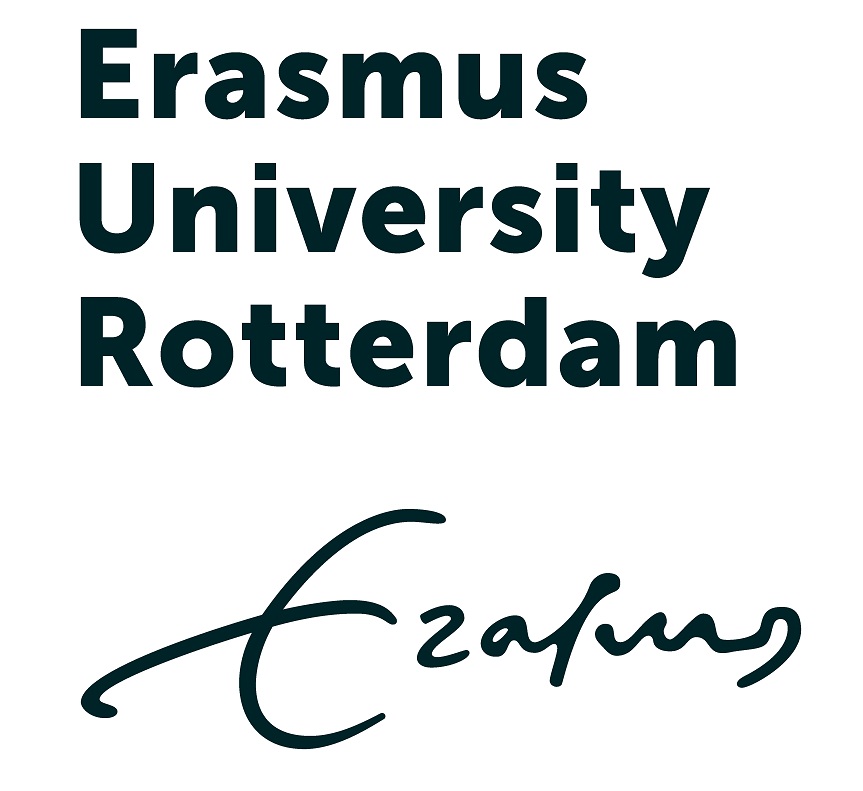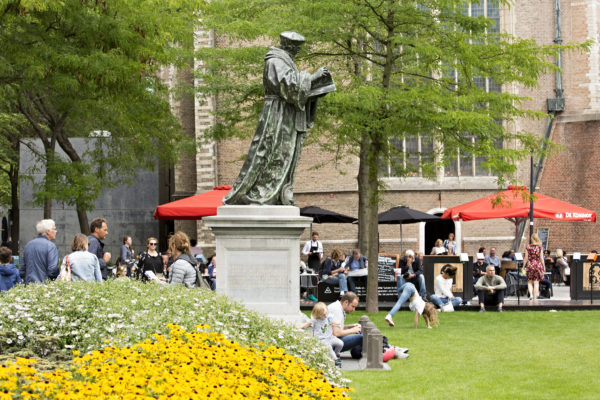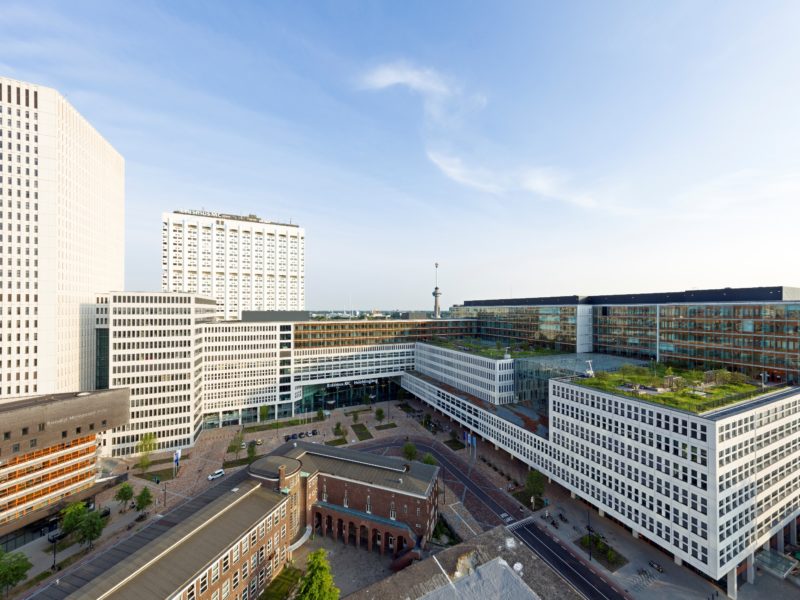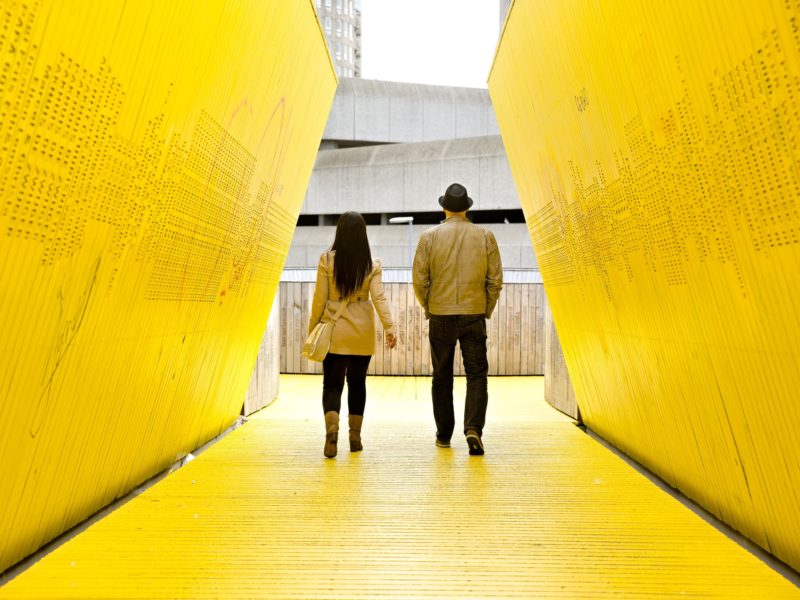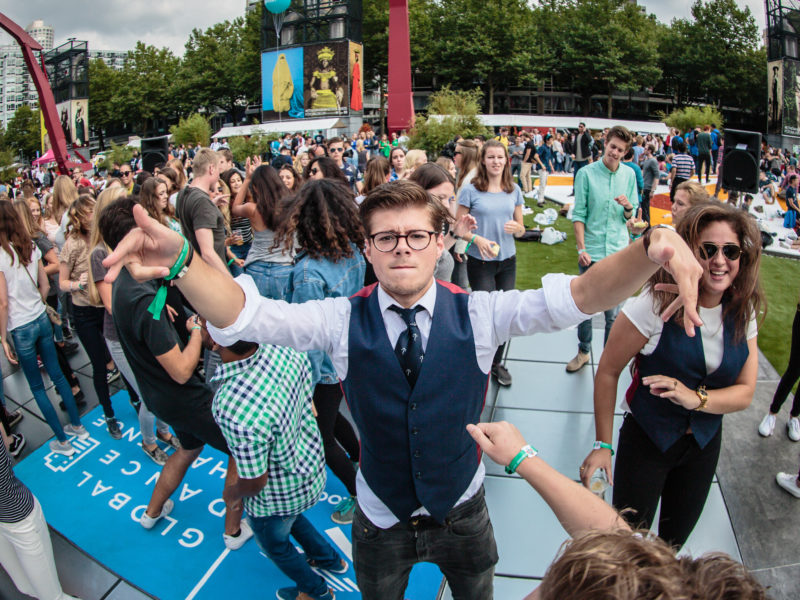Just think of the original 17th century pedestal upon which the statue of the great Rotterdam thinker Desiderius Erasmus once stood. Then picture a mirroring stainless steel sculpture next to it. What would the result be? A special, new work of art that you can admire on the campus of Erasmus University Rotterdam. What you don't spot straight away but which is significant for this new work of art is the Make It Happen spirit that assisted the artist, Kathrin Schlegel, in literally raising this artistic masterpiece from the ground...
Reflection
The sky, the seasons, the buildings of Erasmus University and the Rotterdam skyline are reflected in this work of art, which was unveiled in 2018. The title
'Der Stein des Weisen' (the philosopher’s stone) refers to the pedestal itself but also to the legendary alchemistic element that was said to turn common metals into gold. Visitors to the park can stand on the pedestal, in a manner of speaking, and follow in Erasmus’ footsteps. They can then stand in front of the bubble in order to 'see' a reflection of their own thoughts; an interesting prospect for students who could use some inspiration for their thesis and who would like to see their own thoughts via a well-organised picture. The work of art is a genuine Rotterdam-made medley of old and new, of past and present.
[caption id="attachment_27810" align="aligncenter" width="800"]
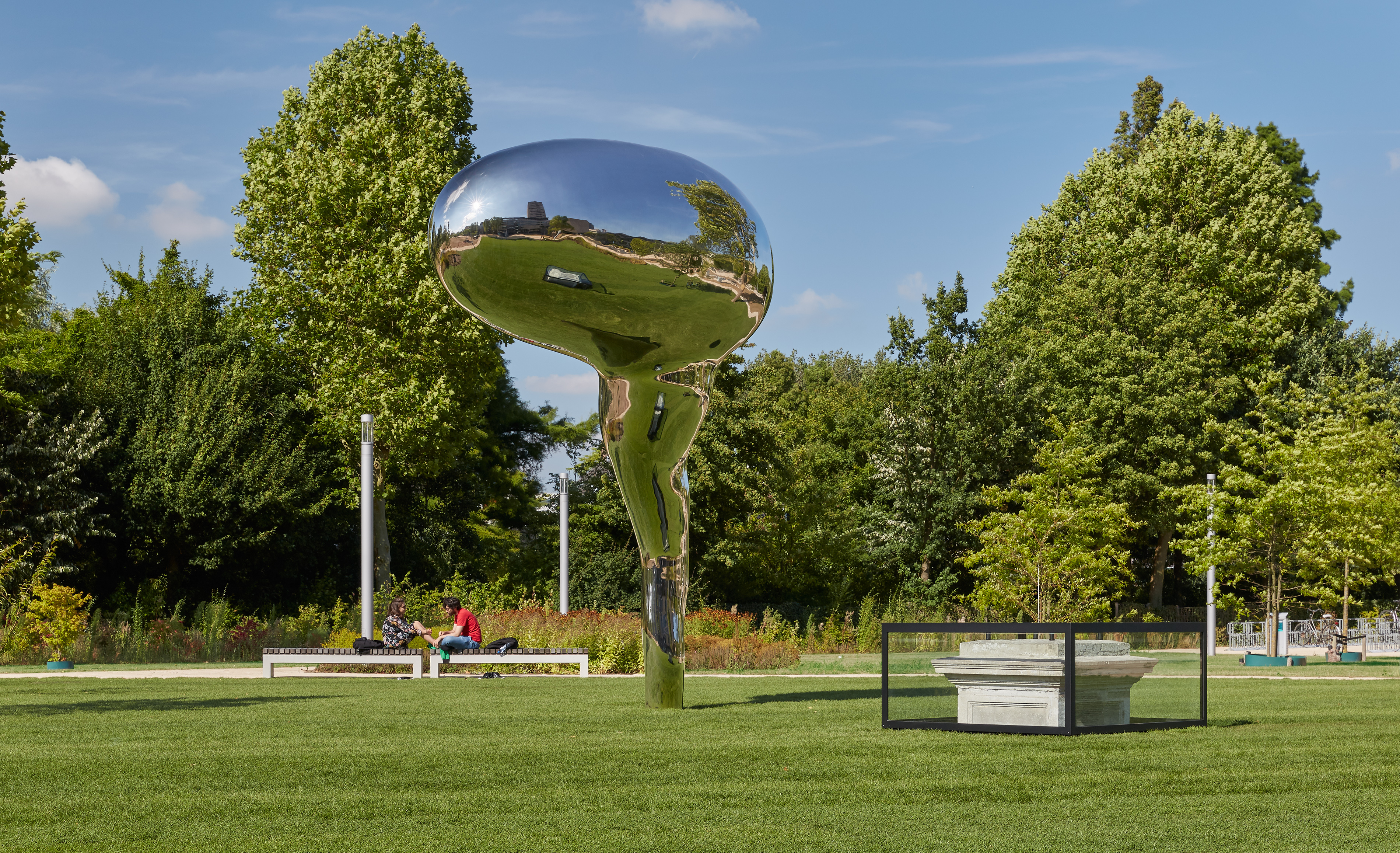
Der Stein des Weisen, Kathrin Schlegel, 2018 - photo: Kathrin Schlegel / Q.R.J. van Dijk[/caption]
An inventive solution
The pedestal is one of the two oldest pedestals in the Netherlands and it used to be the base for the Erasmus statue, crafted by Hendrik de Keyser in 1622. After nearly 300 years, the statue and pedestal were separated; the bronze statue was fitted with a new pedestal on the Grotekerkplein and was labelled as a monument in 1972.
The original pedestal had been displayed in the Erasmus Gymnasium schoolyard since 1965. The seventh-century artefact, with the impression of the statue still visible, was away from the public eye and, as such, was unfortunately falling into oblivion. However, the idea of integrating the pedestal within a new work of art aroused revived attention from heritage experts, for this is indeed a museum object, which requires careful handling.
Rotterdam’s quest was by no means a simple one and a great deal of perseverance and flexibility were required from the artist. In order to integrate the pedestal within the work of art in a historically responsible manner, she set about her task with an equal dose of innovation and creativity; the pedestal could only be used when stored in a glass casing. And this is precisely what she created. The result is more than impressive; the monumental bubble of speech/thought blends with the campus environment by virtue of its reflecting material, creating a superbly innovative gateway between past, present and future. Since its installation, this iconic work of art has become a popular object for selfies.
The
Stein des Weisen is part of the university's art collection, including amongst others one of the three colossal ceramic works by Karel Appel, together with an extensive collection of graphic works.
Find out more about
art on the Woudestein campus or follow the
art walk.
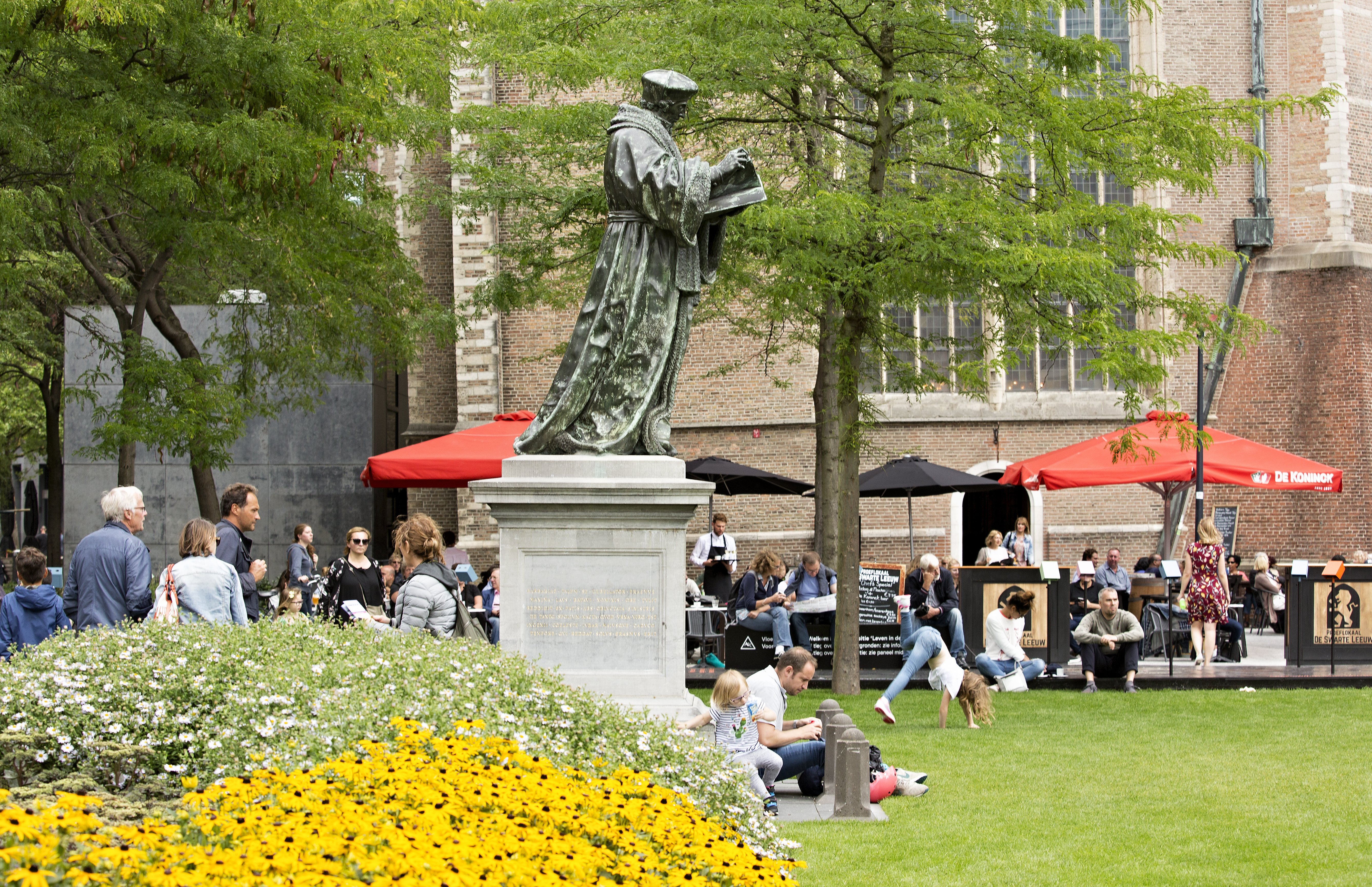
 Der Stein des Weisen, Kathrin Schlegel, 2018 - photo: Kathrin Schlegel / Q.R.J. van Dijk[/caption]
Der Stein des Weisen, Kathrin Schlegel, 2018 - photo: Kathrin Schlegel / Q.R.J. van Dijk[/caption]

